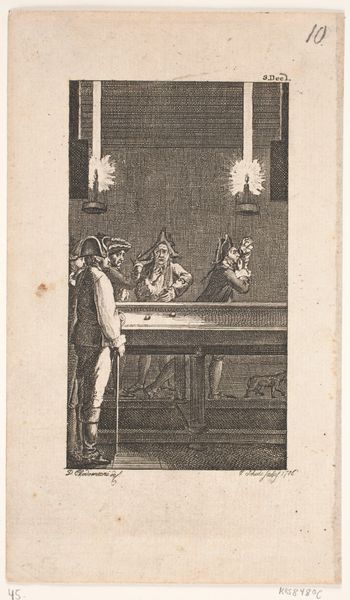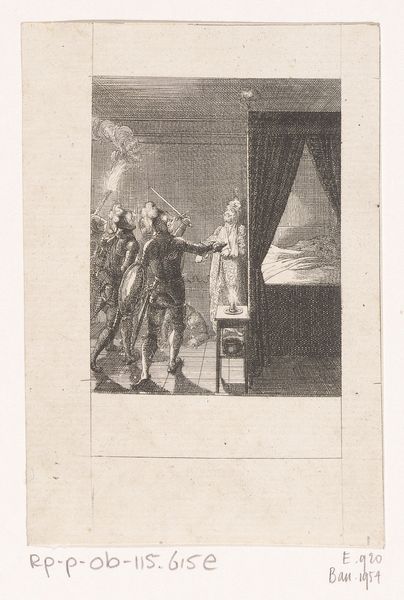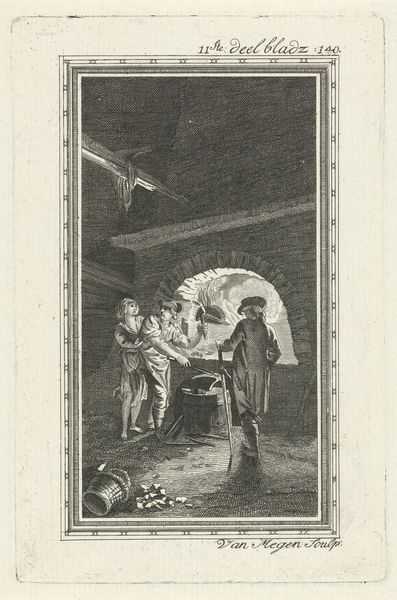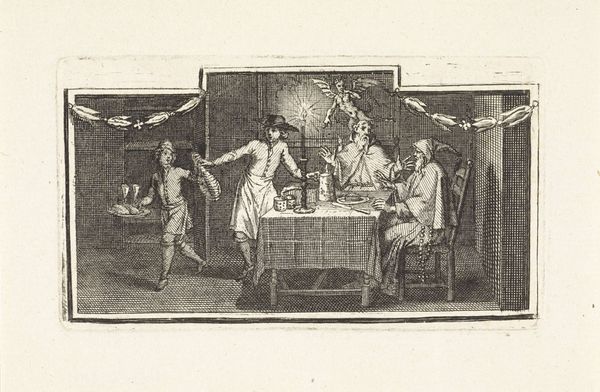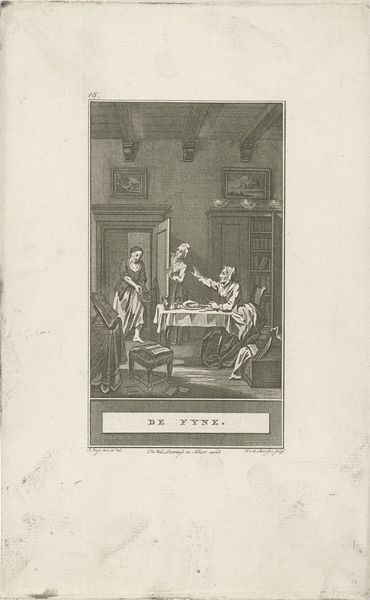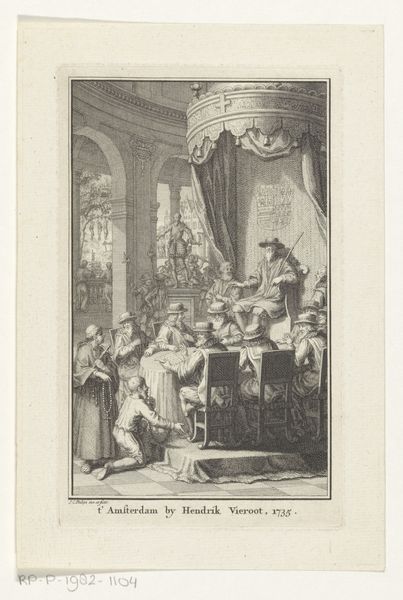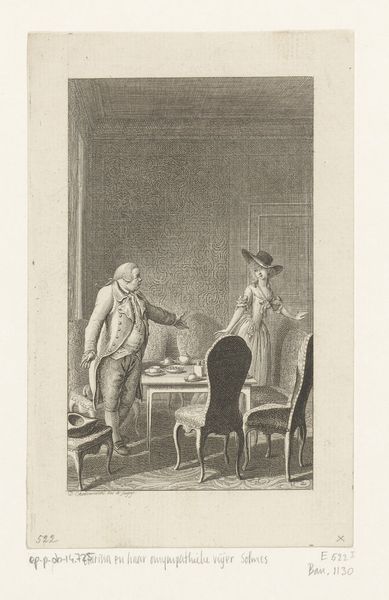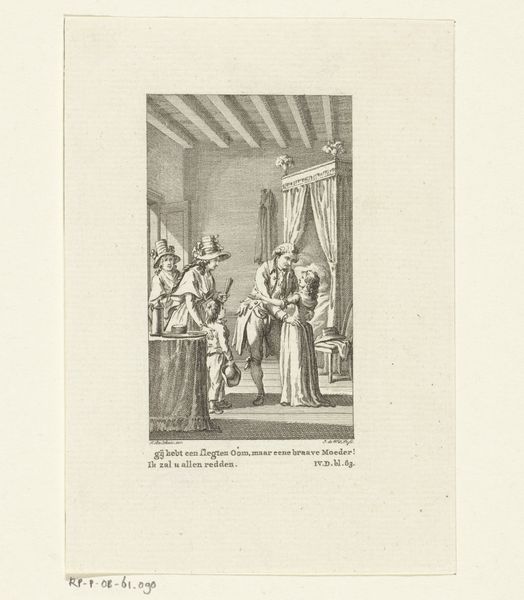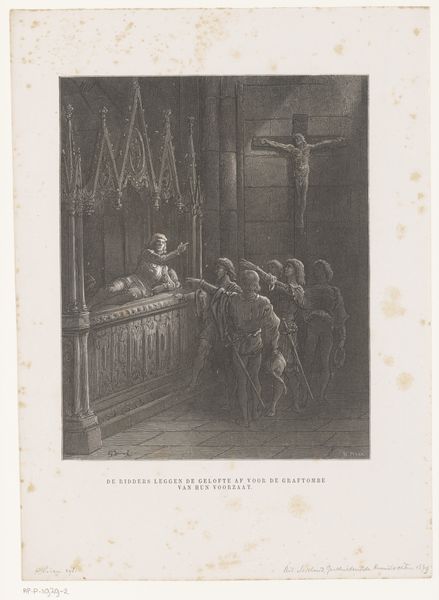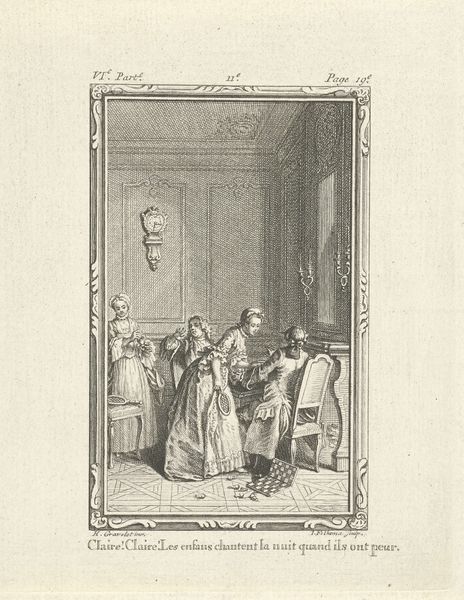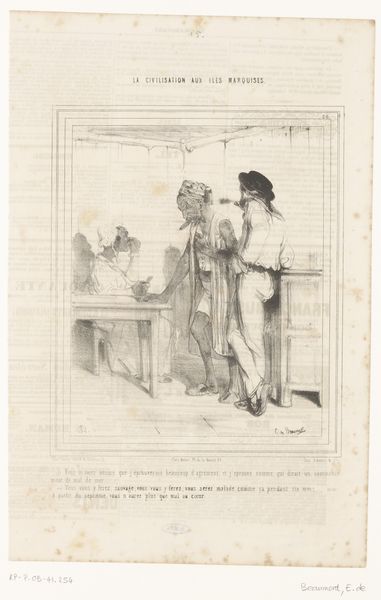
Titelvignet til Smollett "Peregrine Pickles Tildragelser" 1786
0:00
0:00
Dimensions: 170 mm (height) x 107 mm (width) (bladmaal)
Editor: This engraving, "Titelvignet til Smollett 'Peregrine Pickles Tildragelser'," created by Georg Christian Schule in 1786, has this incredible, almost tangible, texture. It looks like a scene of gentlemen playing billiards under candlelight. What can you tell me about it? Curator: This piece, being a print intended for a book, operates on a material level by translating visual narrative into a commodity. Consider the labor involved: the engraver, the printer, the author, the publisher. Schule's craft facilitated Smollett's storytelling reaching a wider audience. How does the mass production via print influence the story's reception? Editor: That's interesting. So the engraving isn't just art; it's a crucial step in disseminating the story and generating cultural capital? Do the materials—paper and ink—factor into that? Curator: Precisely. The choice of engraving allows for detailed lines but also reproducibility. These materials were not neutral. High-quality paper signaled a more affluent readership, while cheaper versions broadened accessibility. It asks us to consider who had access to this image and the story it accompanied and what that meant for the perceived value of both. Who could afford leisure, who could depict it, and who was left out? Editor: That completely changes my perspective. I was initially focused on the image, but you've highlighted how the very process of making and distributing this print shaped its meaning and social impact. Thank you! Curator: My pleasure. Looking at art through the lens of its production reveals fascinating stories about labor, access, and social structures that may be lost if we focus solely on aesthetics.
Comments
No comments
Be the first to comment and join the conversation on the ultimate creative platform.
